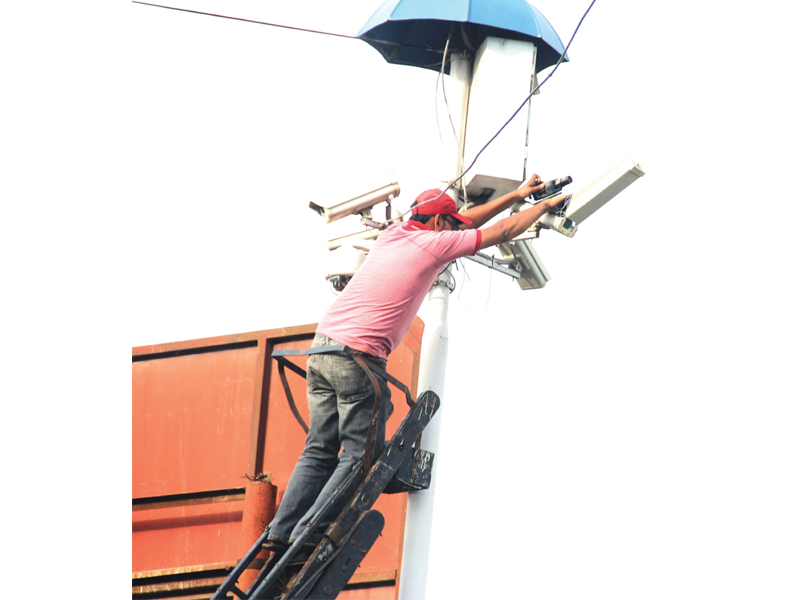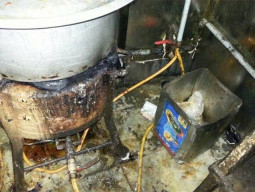
The Sindh government has transferred the management of around 152 closed-circuit television cameras of the Karachi Metropolitan Corporation (KMC) to the police.
Now that the law enforcers will have access to nearly 400 security cameras located at strategic locations across the city, the government hopes to bring the city’s law and order situation under control. According to a notification issued by the local government department, the police will manage and operate the command and control system set up at Civic Centre, even though the KMC will retain ownership.

The ownership rights of the surveillance system will also be transferred to the police department, perhaps in the second phase, said Karachi administrator Saqib Soomro. “KMC only had access to around 152 cameras installed at important locations of the city that were being monitored by officials of the metropolitan corporation, the police and Rangers to end street crime and cope with any untoward incident,” Soomro told The Express Tribune. “But now, the police and the Rangers have taken over given the worsening law and order situation.”
Meanwhile, Citizens-Police Liaison Committee (CPLC) chief Ahmed Chinoy clarified that the police will not be given ownership of KMC’s surveillance system. “The police will only operate and manage it.”
KMC’s surveillance
This command and control system, established in January 2008 by the then city nazim Mustafa Kamal, covers the underpasses at Nazimabad and Liaquatabad, Karsaz, SITE, Rashid Minhas Road, MA Jinnah Road and Sohrab Goth. It is managed in three shifts by more than 80 people including engineers and technicians working at all hours.
In the year 2012, President Asif Ali Zardari inaugurated a Rs690-million project to increase the number of CCTV cameras to 910. The funds were released by Sindh governor Dr Ishratul Ebad Khan and nearly 164 spots in the city were identified where poles would be erected and five cameras would be installed on each pole.
“This system was being installed after studying the surveillance models used by the police in London, Istanbul and the UAE,” said Soomro, adding that the project is still in its initial stages. He wondered, however, whether the remaining cameras will now be installed by the KMC or the police. “After the project is complete, the command and control system will have access to around 1,152 CCTV cameras in Karachi,” he said.
According to Chinoy, the installation of 910 cameras is still in the pipeline. “This system is jointly being installed by the KMC and the CPLC but it will be executed by the police and Rangers,” he said.
Combining two systems
Meanwhile, the police department, too, has its own command and control system at the Central Police Office that monitors nearly 250 cameras.
To make the most of these equipment, the government has decided to combine the two systems. After handing over KMC’s surveillance system to the police on Thursday, Sindh chief secretary Muhammad Ijaz Chaudhry held a meeting with commissioner Shoaib Ahmed Siddiqui to discuss the best way to achieve this. “The provincial government will integrate the two surveillance systems to keep a close watch on criminals,” Siddiqui told The Express Tribune.
What will the government do about the cameras that do not work? Siddiqui explained they will examine the works of all companies providing this service. “The government will provide a certificate to those companies whose systems are working properly,” he said. The government will revamp the older cameras that are not working, he added.
Success rate
According to Chinoy, the presence of CCTV cameras is a big help to the law enforcers, especially during processions and gatherings for Eid Miladun Nabi and Muharram. The police monitor the gatherings and are updated every minute, he said, adding many bank robberies have been foiled with the help of this surveillance system.
Published in The Express Tribune, September 6th, 2013.

















COMMENTS
Comments are moderated and generally will be posted if they are on-topic and not abusive.
For more information, please see our Comments FAQ